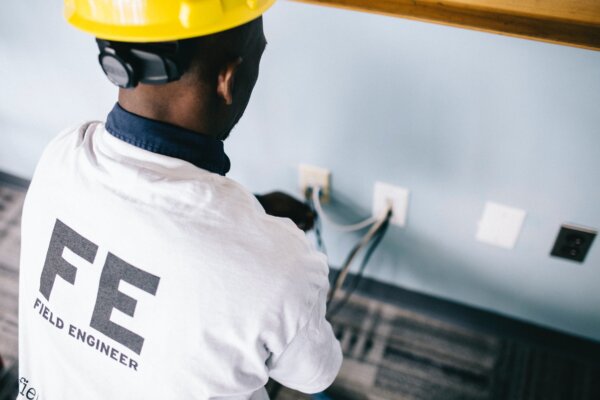
Top 5 Common Causes of Electrical Fires in Australia and how to prevent them
Electrical fires are common occurrence in residential places. The majority of electrical fires are caused by either break down electrical equipment or faulty wiring can become the source of an electrical fire. The colder months experience the most electrical fires due to increased use of heating appliance and lights. Electrical fires are especially dangerous. Since most electrical wiring is hidden behind walls and cabinetry, you may not even realise a fire has broken out.
Understanding the common causes, warning signs of faulty or old electrical wiring and appropriate safety measures can help prevent an electrical fire in your home. It is a good idea to conduct the safety inspection by yourself, or Get professional electrician for home once in a year to ensure that your house and your family are safe.
In the meantime, learn about the most common causes of electrical fires and their preventions before something happens. There are few main causes of electrical fires,
- incorrectly installed wiring,
- Overloaded circuits and extension cords
- Ageing wiring or power points and
- Misuse and poor maintenance of lighting
It’s important that everyone must be aware the risks and potential cause of electrical faults can poses serious fire threat. Prevention and maintenance truly is the best defence to make sure your home is always well protected. In this article, we discuss the common causes of electrical fires.
1. Faulty outlets and aging appliances
Every home has lot of them. Most electrical fires are caused by faulty electrical outlets and old appliances or worn out sockets that are not properly grounded. This can be include faults switches, outlets or appliances cords get older or overheating appliances. If an appliance has a worn or frayed cord it can generate dangerous levels of heat into combustible surfaces like floors or curtains and start a fire. If you are aware of the dangers and do regular maintenance, you can avoid an electrical fire.
2. Overloading Light fixtures
Light fixtures, lamps and light bulbs are another common reason for electrical fires. Sometimes a simple light bulb can cause trouble. Light fixtures are designed to take a maximum recommended bulb wattage and if you’re installing a light bulb that draws more power than it is rated for, there is the possibility of overheating and electrical fire and avoid placing any material over the light bulbs or lamp shade as the material quickly heats up and ignites.
3. Portable heaters
Many times people put them too close to combustible surfaces such as curtains, beds, clothing, chairs, couches and rugs. If you’re going to use a portable heater, try the radiator type which diffuses heat over the entire surface of the heater, meaning it is less likely to overheat and ignite, but should still be kept away from them.
4. Circuits overloaded
Electrical fires are often the result of a circuit overload. If an electrical current exceeds the wiring capacity of the circuit, it can cause a short circuit to overheat, but also an electrical fire.
Plugging too many appliances into a single power board can not only cause a short circuit to overheat and possibly become a fire hazard. Electrical outlets are designed to shutoff electric power when the circuit becomes overloaded.
5. Old Wiring
Old buildings often have outdated wiring that was not made to handle the amount of electricity people use today, such as computers, wide-screen televisions, video and gaming players, microwaves, air conditioners and many other appliances. House fires can occur when people try to push an old wiring system beyond its abilities. The best solution is to replace the old wiring with an updated system that can handle all the high-powered appliances, devices and electrical decorations that fill modern life. When getting a house re-wired, it is important to get a qualified, local and professional licensed electrician who knows the ins and outs of safety procedures by heart.
